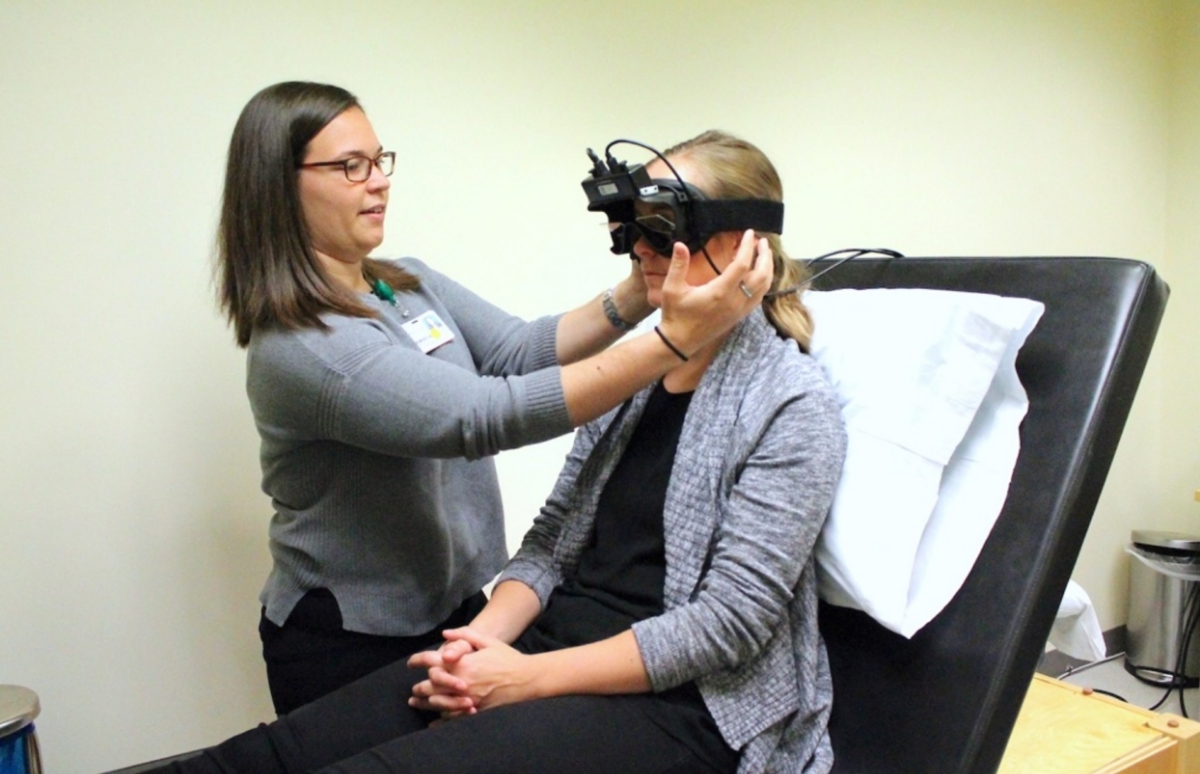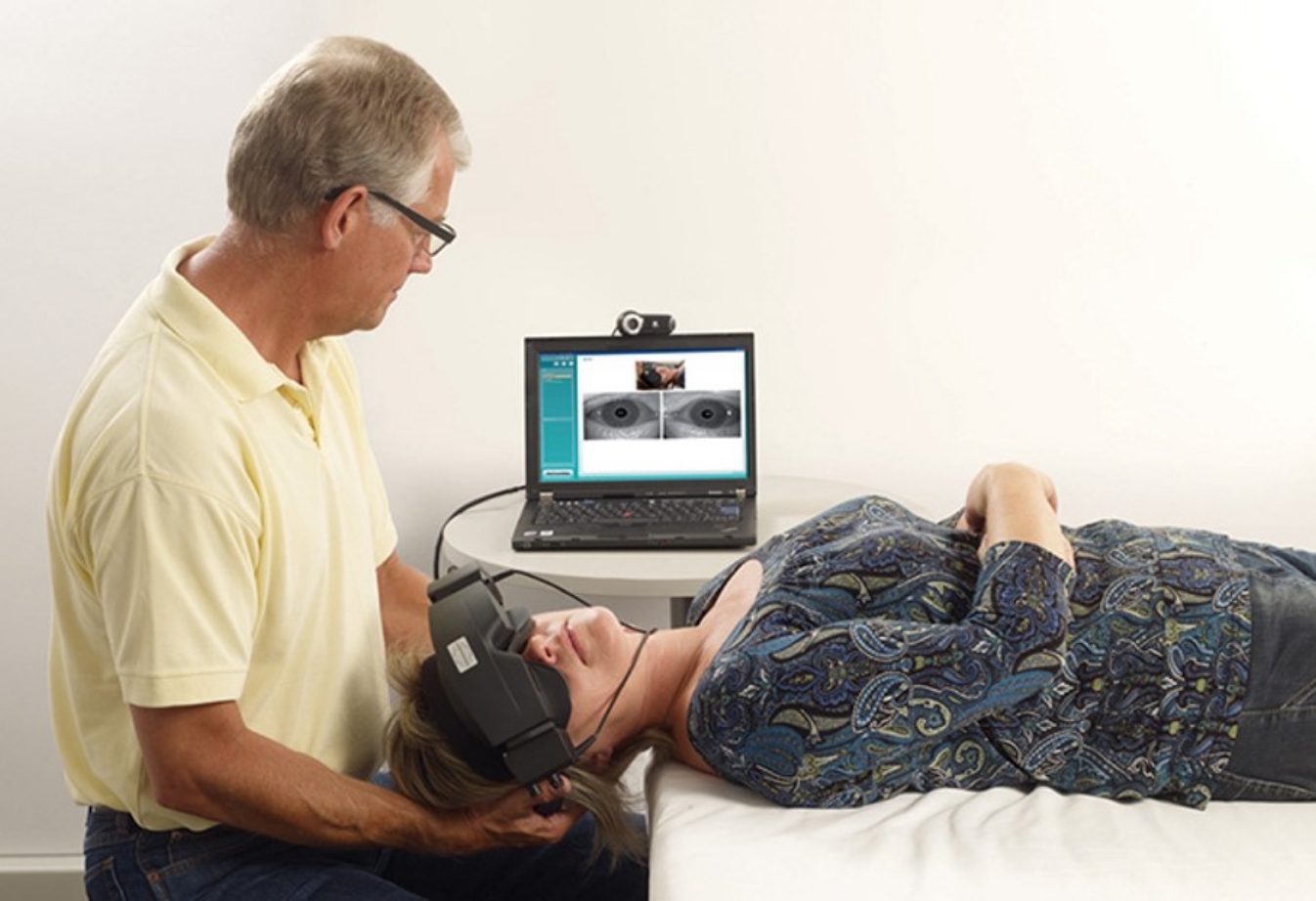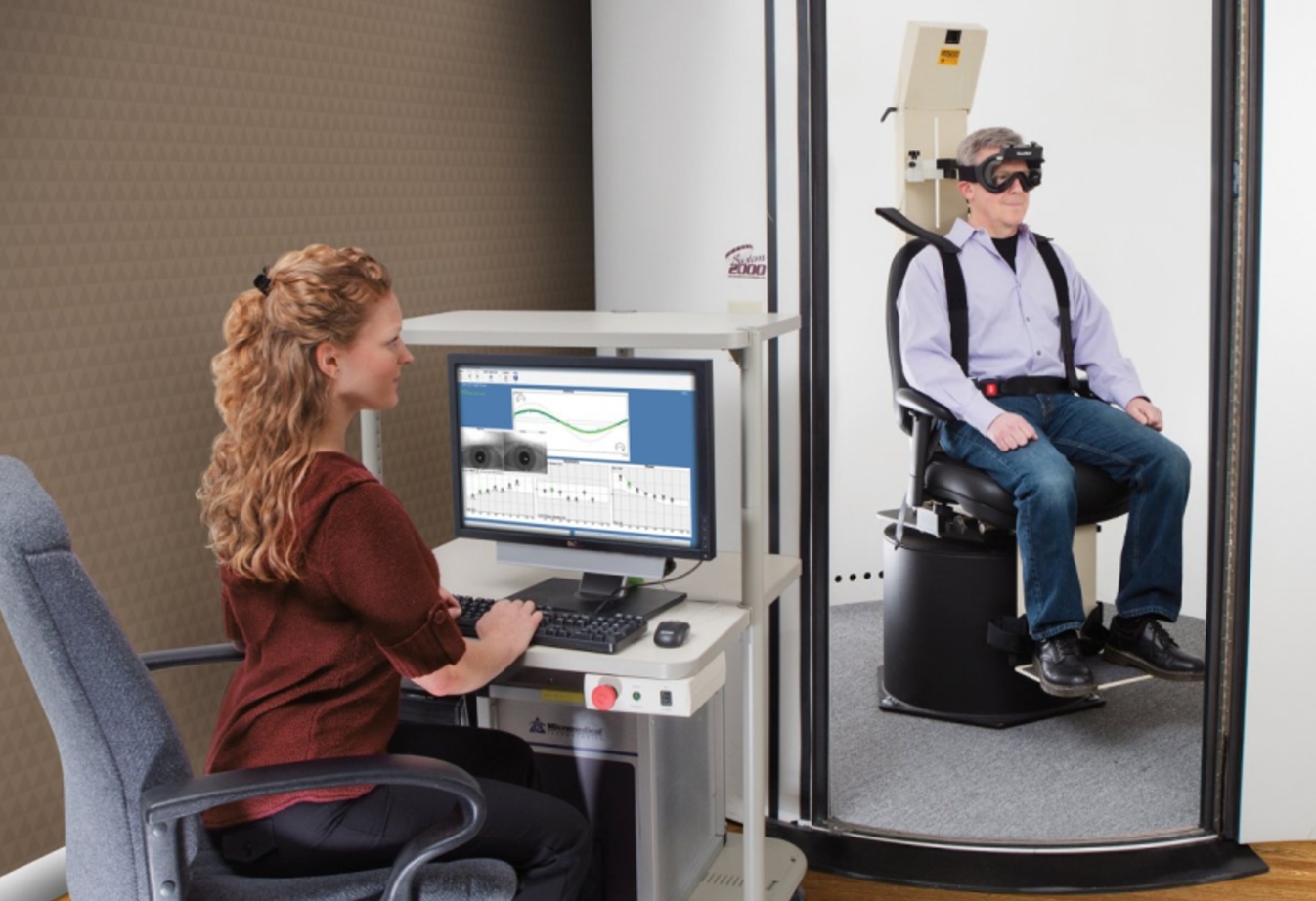Vestibular assessment
The VHIT is an instrumented bedside technique used to diagnose a reduction in vestibular function in one ear compared to the other. An examiner abruptly accelerates and then decelerates the head, moving the head in rapidly at high speed and then stopping it.

What is a vertigo test?
Vertigo causes and treats dizziness. The sense of dizziness or spinning. It is a false sensation of movement. The person feels like he is spinning or that the world around him is spinning. It is caused by a problem with the inner ear, brain, or sensory nerve path. Vertigo can occur at any age, but usually it happens in people aged 65 and older.
Vertigo causes can be barely noticeable or can be very severe, which makes your day-to-day activities unmanageable. Vertigo attacks can develop suddenly and last for a second, or they may last for much longer.
What causes vertigo?
-
01
Vestibular Neuronitis
This condition occurs due to viral infections causing inflammation in the vestibular nerve, resulting in vestibular neuronitis.
-
02
Labyrinthitis
It is an inflammation in the vestibulocochlear nerve, which is responsible for encoding the body's position, motion, sound, and inner ear labyrinths. Inflammation is usually caused by viral infections.
-
03
Meniere’s Disease
It is the formation of fluid in the inner ear that leads to tinnitus (ringing in the ear) and hearing loss, triggering vertigo attacks.
-
04
Cholesteatoma
It is the abnormal growth of skin in the middle ear as a result of chronic infections. The accelerated growth causes ear damage, which results in hearing loss and dizziness.
-
05
BPPV
Benign paroxysmal positional vertigo occurs when calcium carbonate crystals develop in the inner ear canal. This leads the individual to lose their sense of balance. BBPV is more common in older adults and can happen for no apparent reason.

Some of the conditions associated with vertigo are
- Head or neck injury.
- Migraine.
- Prolonged bed rest.
- Ear surgery.
- Certain medications.
- Otosclerosis.
- Stroke
- Brainstem disease

Signs and symptoms, you need to consider
- Light headiness.
- Motion sickness.
- Headache.
- Tinnitus.
- Abnormal eye movement.
- Dizziness.
- Loss of balance and difficulty in walking.
- Loss of consciousness or fainting.
- Neck pain.
Available treatments for vertigo
Vertigo causes and treatment of dizziness depends on the causes and severity of the condition. Some of the common treatments include
Medications

Medications are prescribed based on the cause, such as water pills for meniere’s disease, anti-anxiety medications, preventive medications for migraine and antihistamines and anticholeretics.
Balance therapy

It is commonly recommended to people with condition vestibular neuritis. It physical therapy which makes your motion system less sensitive to motion. It is also called as vestibular rehabilitation.
Head position maneuvers

It is a technique called epley maneuver or canalith re-positioning, It helps to resolve benign paroxysmal positional vertigo quicker than simply waiting your dizziness to go away. It is done by an audiologist or a physical therapist. Before starting this procedure of Vertigo causes and treatment of dizziness always tell your doctor if you have any back or neck pain, blood vessel problem or detached retina.
Ear injections

Antibiotic gentamicin injections will be injected in the inner ear to disable the balance function and helps the unaffected ear to take over the function.
Inner ear sense organ removal

This technique is used if the condition is serious. It is a rarely used procedure called labyrinthectomy. It disables the vestibular labyrinth in the infected ear, and helps the other ear take over the balance function












